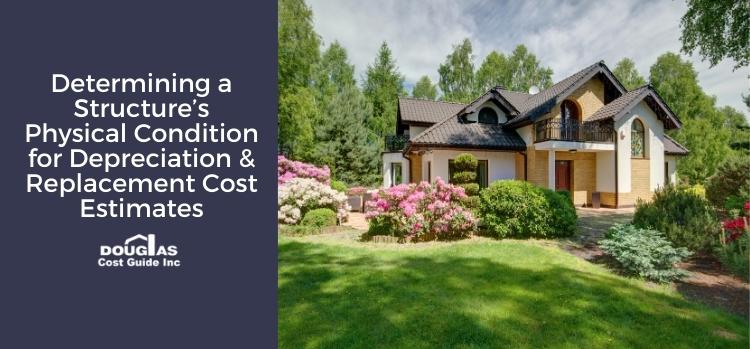Understanding and determining a structure’s physical condition is crucial. Physical condition is also part of estimating the Physically Depreciated Value / Actual Cash Value of a structure or residence. Whether the structure is for agricultural purposes or a dwelling, the evaluation of its physical condition is subjective. The Douglas Cost Guide helps homeowners and farmers understand how it’s determined and what definitions are used by industry professionals to help accurately determine depreciation and replacement costs.
Who Determines a Structure’s Physical Condition?
When determining depreciation or replacement cost estimates, an inspector is used to provide an assessment and inspects the structure. The structure’s physical condition is subjective and can vary depending on who is visually inspecting the structure or dwelling.
Several inspectors may have different opinions about the condition, at a given moment in time, due to the subjective nature of this process. It can involve taking photos of the structure, measuring to verify documentation, and inspecting above-grade and below-grade assets.
How to Inspectors Rate a Structure’s Physical Condition
A thorough interior and exterior inspection needs to be completed of all visual components of the structure or residence along with an interview of the owner to determine all changes, upgrades, improvements, renovations, additions as to when they were completed, which all combine to assist the inspector with estimating the physical condition and eventually the Actual Cash Value.
The inspector will evaluate the physical condition of the structure using these definitions:
Excellent
- The improvement is in new condition
- There is no evidence of physical deterioration
- The building or structure is being used the way it was initially intended for
- All building services are modern and adequate
Good
- Minor deterioration is visible
- It is structurally sound and well maintained
- The building continues to be utilized for its original intended use
- Services remain modern and adequate
Average
- Normal wear and tear are visible
- The improvement is structurally sound, but some repairs are needed, and some components may requirement replacement
- The building continues to be utilized for its original intended use or now occupied by a use for which it was renovated for
- Building services remain proper and adequate
Fair
- Some structure deterioration exists
- Signs of decay and the effects of wear and tear are apparent throughout
- Maintenance has been deferred
- Rehabilitation and/or reconstruction is needed
- Building utility and services are considered inadequate
- Effective ad is increased over the actual age
Poor
- Definite deterioration is obvious
- Extensive structural deterioration exists
- Major repairs and/or replacement of the improvement must occur to return the structure to a serviceable condition
- Building may be vacant or occupied by a use other than for which it was originally intended
- Building services may be partially removed, unused or adapted for the current occupancy
Replacement Cost Calculator Trusted by Professionals
Many property owners need to assess their building’s physical condition when considering depreciation and replacement cost estimates. At its core, assessing depreciation or replacement costs requires understanding the underlying physical condition of the structure. This includes inspecting major systems and components like electrical wiring, plumbing, HVAC units and other features which will be impacted by the economies of scale when it comes time to upgrade or replace them. Use The Douglas Residential or Agricultural Cost Guide to help you determine and accurately estimate replacement costs for your structures.

